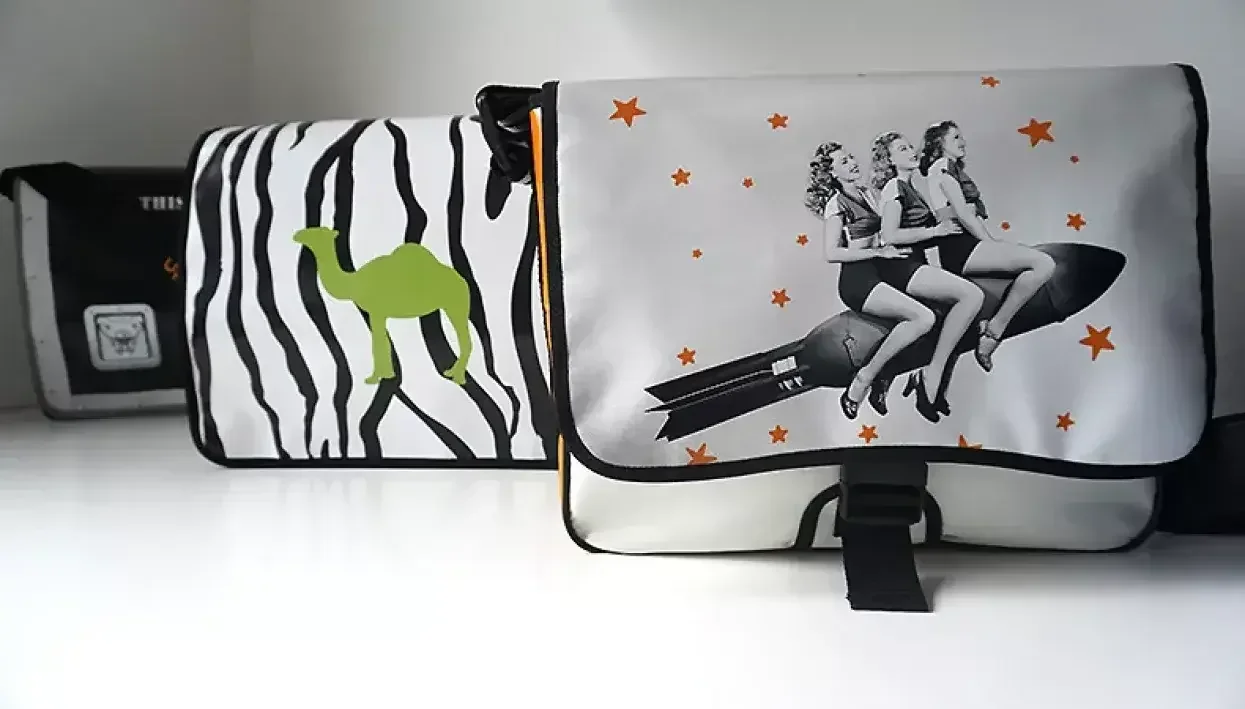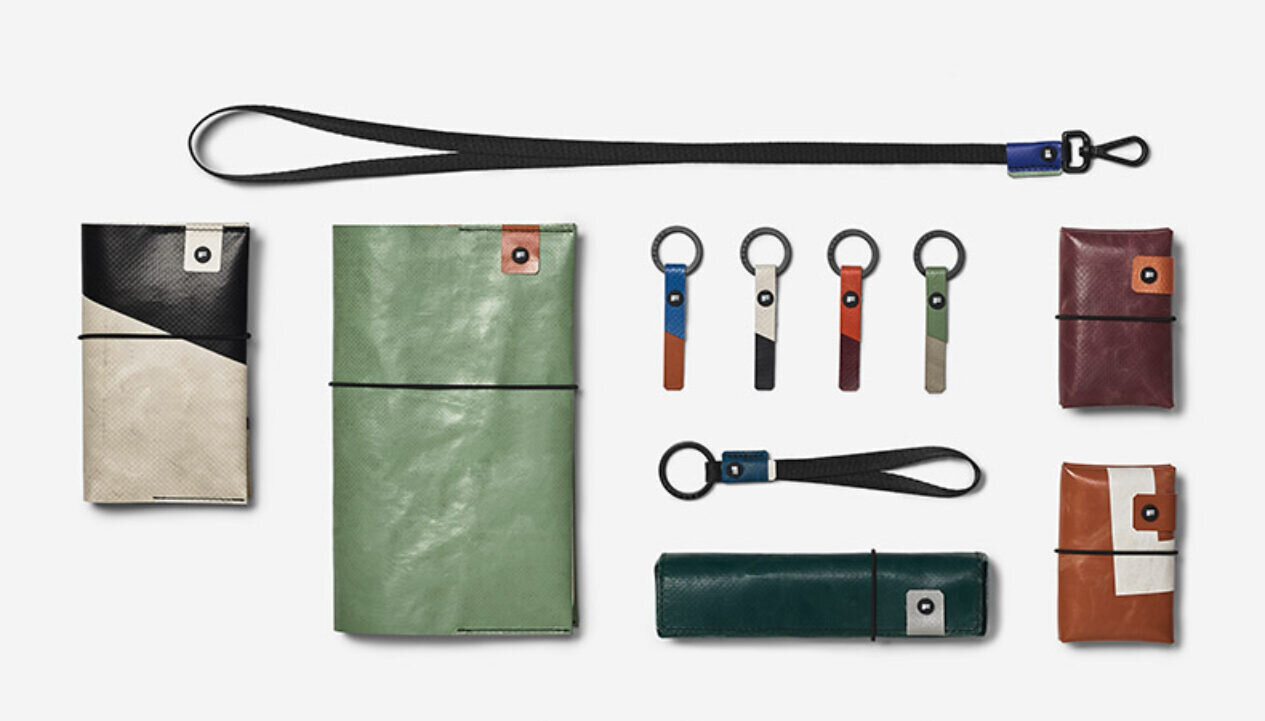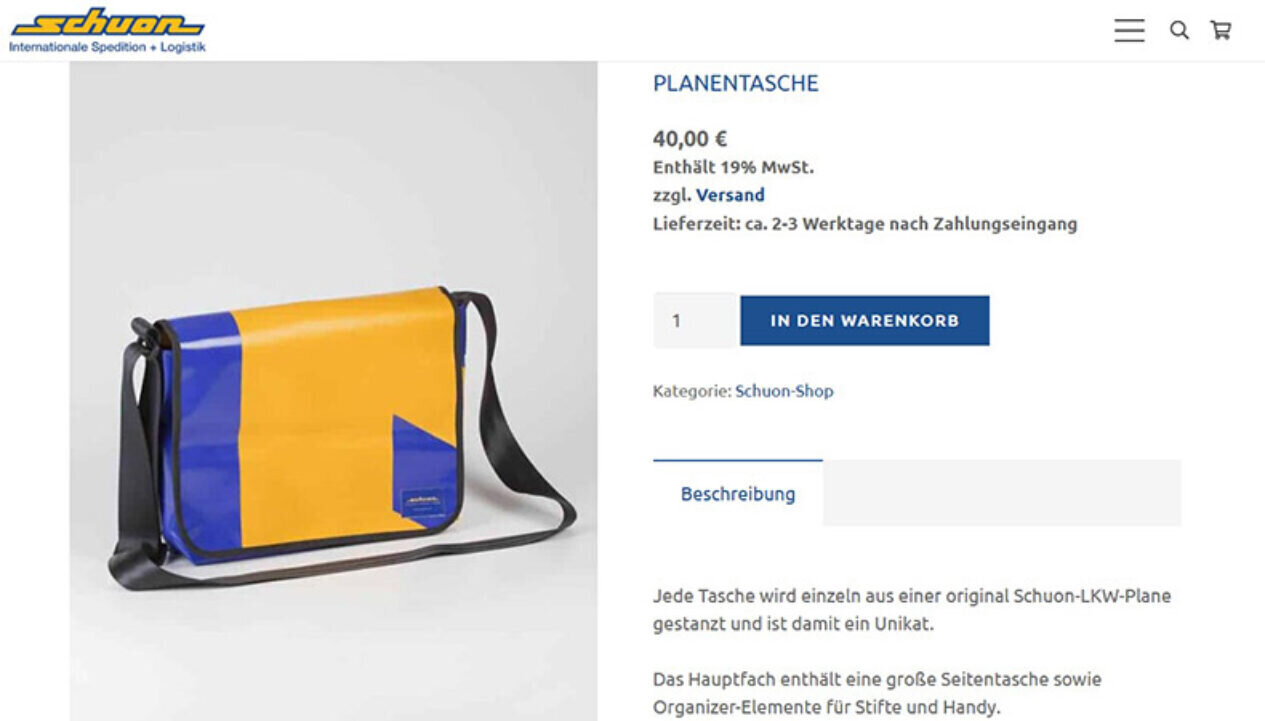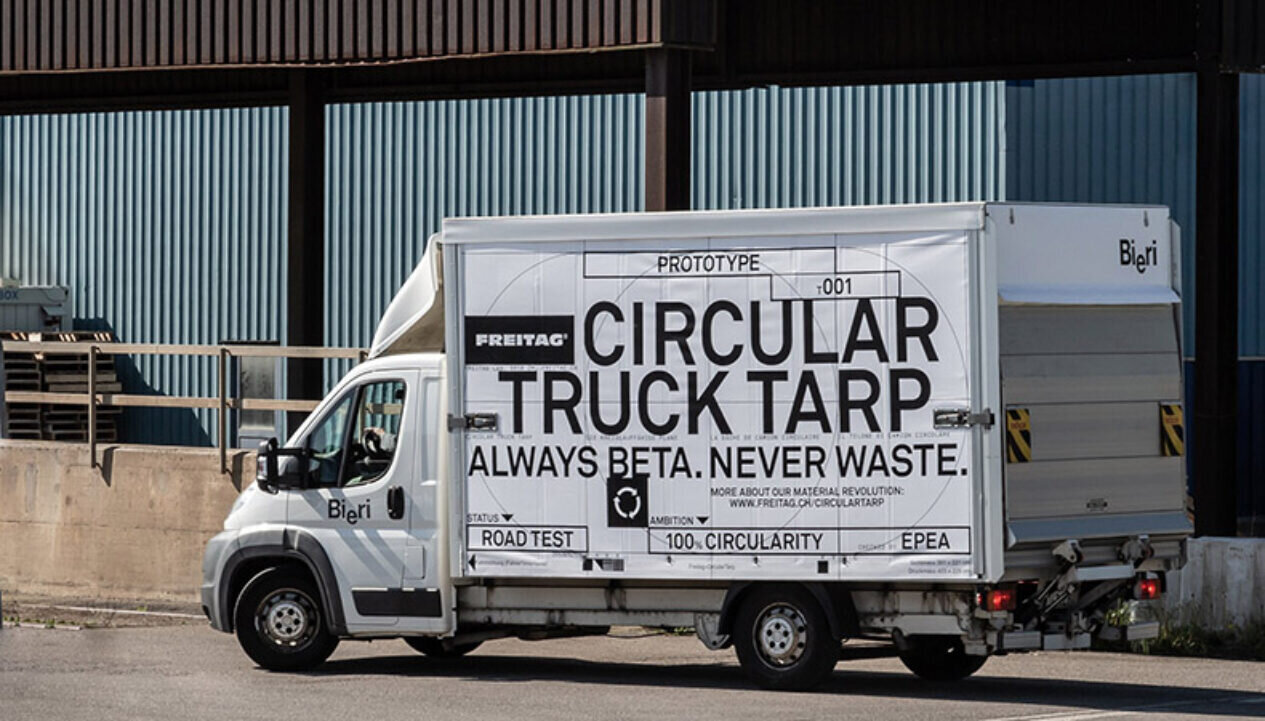
Every year, hundreds of thousands of square meters of digital print tarpaulin are disposed of. But the increase in initiatives aiming to reuse the robust material are growing. Sonja Angerer shares a few examples and the future of upcycling in digital print.
Many people love Megaposters, but they create the large amount of plastic that is damaging to the environment. After all, even a smaller poster of about 10 x 15 meters creates approximately 150 square meters of mesh or tarpaulin. However, digitally printed posters account for only a very small fraction of the tarpaulin material used in Central Europe, as the biggest amount is created by side curtains and roofs of truck trailers.
Digital print tarpaulins, an environmental problem
In 2013, a study commissioned by Plastics Europe, the pan-European association of plastics producers, showed that 10,000 tonnes of tarpaulin were processed for tents and trucks in Germany alone. Today, many different substrates are used for Megaposters, including options made from renewable raw materials and recycled matter. Truck tarpaulin, typically with a weight between 600 and 900 g/sqm, is still made of polyester carrier fabric that has been coated with PVC, as this is the only substrate to withstand the weather on the road. It can also be easily cleaned with a steam cleaner.
According to Plastics Europe, 99% of PVC waste in Germany was recycled in 2021, i.e. not sent to landfill. But over 60% ends in waste incineration instead. The problem is not new, and over the last few decades it has encouraged several initiatives to reuse the printed tarpaulin material by refining it into a higher quality product, and so to upcycle it.
Swiss company Freitag manufactures many different upcycling products from printed truck tarpaulins.
Image Credit: FREITAG.lab AG

Freitag: Pioneers of digital printing tarpaulin upcycling
In 1993, Daniel and Markus Freitag presented the first prototype of the Messenger Bag F13 TOP CAT in Switzerland, made from discarded truck tarpaulins, bicycle inner tubes and car belts. Since 2003, it has been part of the exhibition at the Museum of Modern Art (MOMA) in New York. The company’s product range has significantly grown since. Today, in addition to bags and pouches, the portfolio of FREITAG lab. ag also includes purses, backpacks, key chains and much more.
Freitag not only uses printed or unprinted truck tarpaulins for upcycling. There are backpacks made of airbag material and smartphone cases upcycled from old ski boots. However, the majority of the raw material, just under 89%, remains tarpaulins from trucks that have been in use for an average of approximately 6 years.
In 2021, the company took it to the next level. The aim is to create a tarpaulin that can be digitally printed and used on trucks, then upcycled to a bag, and to finally return to the create a new substrate: Circular Tarp. Various approaches and prototypes are currently under testing. Heytex, a manufacturer of digital printing substrates, is also involved in the development of the “endlessly recyclable” tarpaulin.
The international logistics company Schuon offers a messenger bag in its shop, upcycled from their original truck tarpaulins.
Image credit: Sonja Angerer

Tarpaulin bags as a consumer good
Since the Freitag founders generated this idea of turning old digital printing tarpaulins into upcycled products has been used many times. Today, there is an entire industry on Etsy that upcycles bags from tarpaulins and other materials. Often, these are smaller industries as well as very small and part-time businesses. But they not only upcycle old tarpaulins, but increasingly also use new substrates, which often is then custom printed.
Tarpaulin bags, like all fashion items, are very much subject to the latest trends. A popular brand like Freitag may still be able to charge premium prices, regardless of the trends. Although, buyers are not currently enthusiastic about the typical “used” look of upcycled products.
That’s why tarpaulin bags, whether upcycled or new, must have a story to tell. For example, the digital printer Niggemeyer Pro Imaging GmbH & Co. KG offers printed shoulder bags and shoppers with a “Wimmelbild” motif by Christoph Baum. The artist had created the huge illustration for the 700th birthday of the city of Bochum (2021).
The Merano manufacturer OlleTog (“Everyday”) also connects with local communities, as the bags, backpacks and accessories are made in South Tyrol, thus creating jobs. However, they only use new tarpaulins and textile material with on-demand motifs made on HP-Latex printers.
Freitag is currently working with its partners to develop "Circular Tarp", a printable truck tarp that can be used in a closed loop.
Image Credit: Elias Boetticher for Friday.

Tarpaulin bags for advertising
Tarpaulin bags have firmly established themselves as promotional items. Suppliers of promotional bags have a wide range of models on offer. Often, there is no upcycling, as they are produced mainly in Asia in large quantities from new tarpaulins.
However, Halfar System GmbH from Bielefeld offers to upcycle advertising banners and tarpaulins for bags in the Lorrybag collection. The customer provides the materials for the upcycling project. Halfar contributes expertise in design and customisation, as well as skilled sewers to create the bag.
Such upcycling initiatives with digital print tarpaulins as promotional bags work particularly well if a real connection can be established. For example, the international logistics company Schuon offers a messenger bag made from of the original tarpaulins of its trucks.
Upcycling: A solution for digital printing waste?
The numerous positive examples of upcycling products from truck tarpaulins demonstrates to the digital printing industry that this is a goal to aim for. Using a material multiple times and, if possible, establishing a closed loop helps to save resources.
However, upcycling is only a small building block on the way to a circular economy. This is true if only because the number of printed tarpaulins in Europe and worldwide is so large that only a fraction can be sold as bags, backpacks, or other products. Changing fashion trends, but above all a lack of skilled workers remains a problem for the industry. Because until such an upcycled product made of digitally printed tarpaulin is finished, many steps and a lot of skill and experience are necessary.
Maybe that is positive. After all, the digital printing industry should focus primarily on avoiding waste and recycling the unavoidable remainder as pure as possible. Nevertheless, upcycling digital prints is a step in the right direction.
To discover the latest content that covers a wide range of sectors including sustainability in print and digital printing sign up for FESPA’s free monthly newsletter FESPA World available in English, Spanish and German.